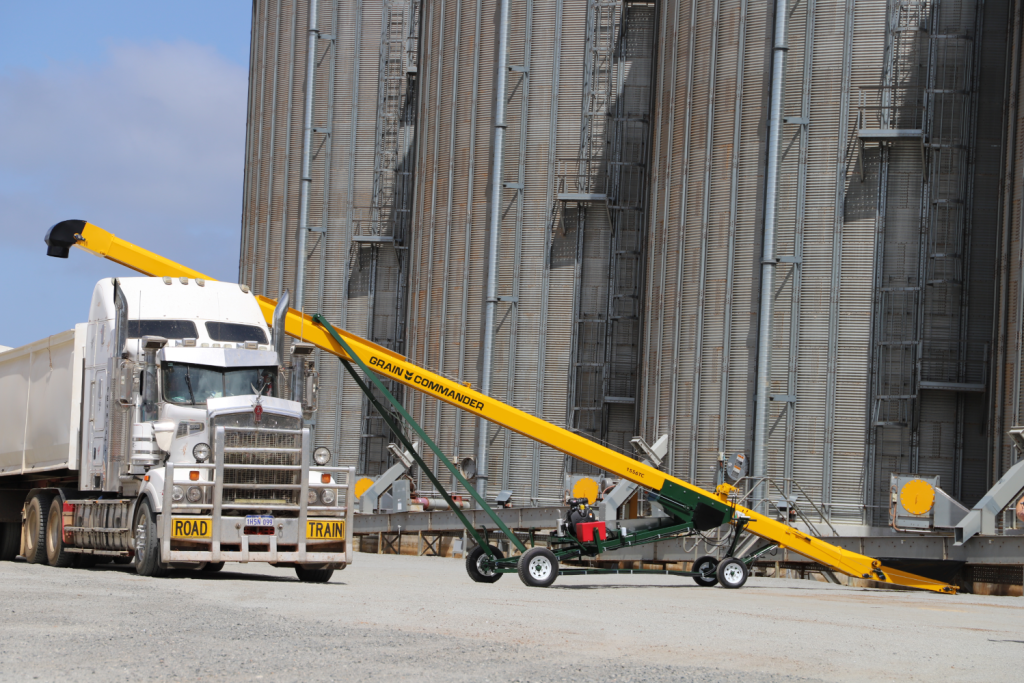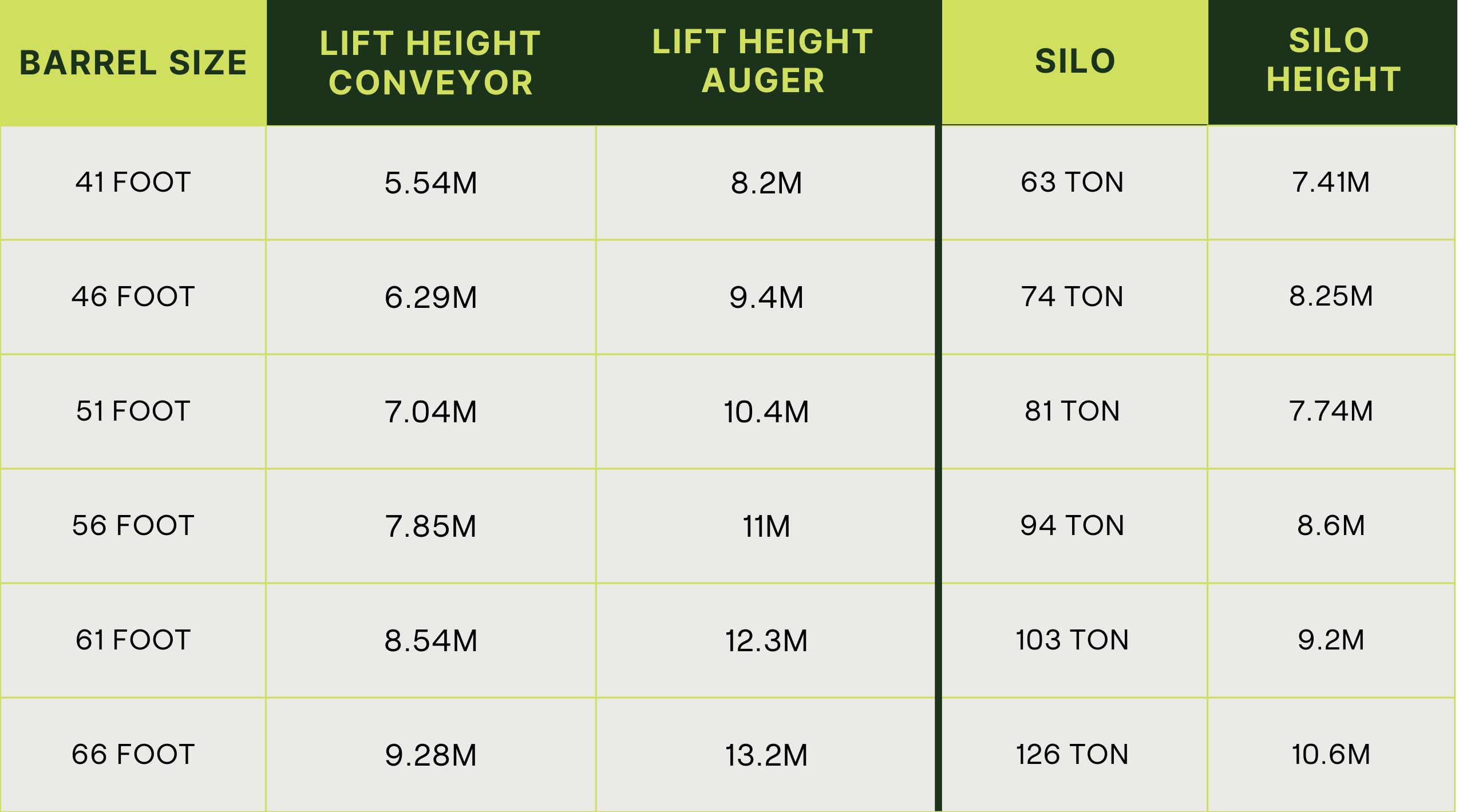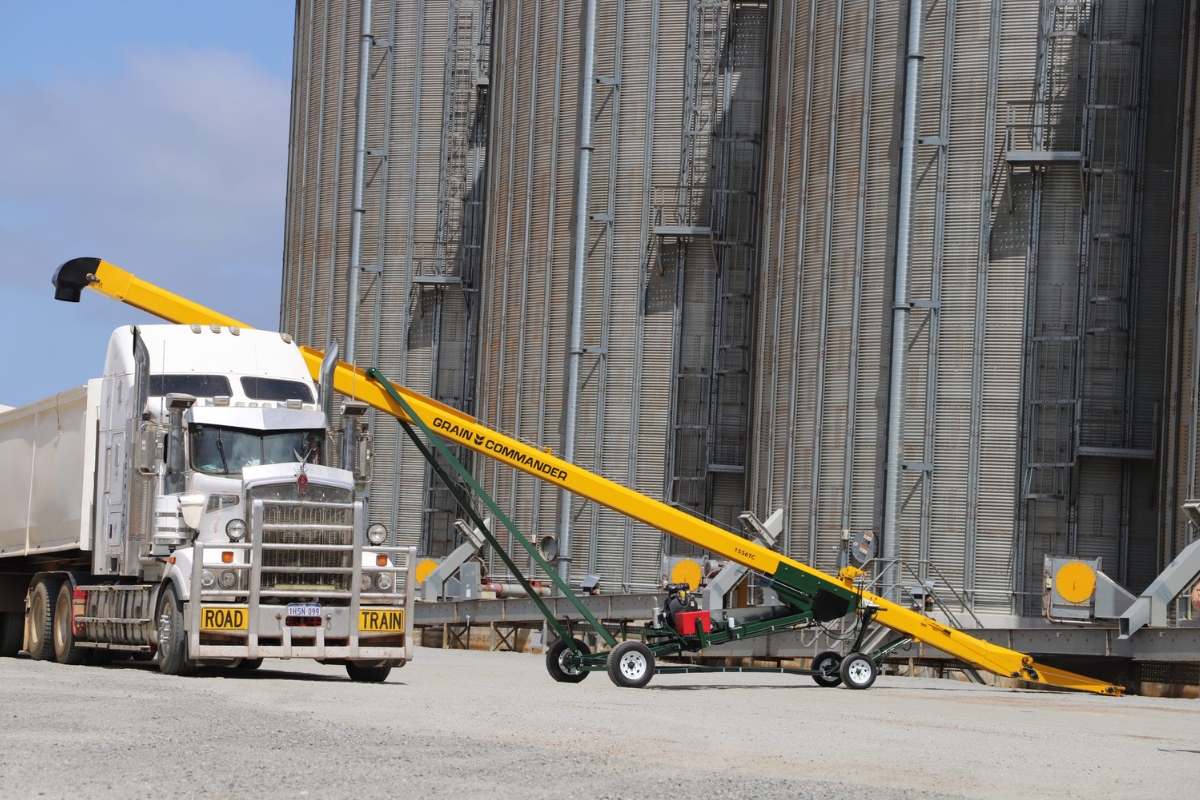Add Your Heading Text HereUnderstanding the Key Advantages of Grain Tube Conveyors Over Augers
In this article we will discuss the key advantages of a grain tube conveyor over an grain auger, helping you understand which unit is best suited for your operation. When it comes to choosing the right equipment for moving grain in your operation, the decision often comes down to grain conveyors versus augers. Both have their unique benefits, but understanding the specific advantages of each can help you make an informed choice. At Commander Agriculture, we offer a range of grain tube conveyors and grain augers designed to meet your needs. Here, we delve into why a conveyor might be the better option for your grain-handling requirements.

Gentle Handling of Grain
One of the most significant advantages of grain conveyors is their gentler handling of grain. This is especially important for crops that are prone to damage, such as peas, lentils, and edible beans. Using a conveyor helps minimize cracking and splitting, which can significantly affect the quality and market value of these crops.
In contrast, augers can be harsh on grain, particularly when running at half capacity or higher speeds. The metal-on-metal contact in augers increases the risk of damaging the grain, which is something to consider if maintaining high quality is essential for your operations. We do offer the option of bean flighting on augers which does help reduce cracking of the beans, using a smaller sized flighting to the barrel (eg. 9 inch flighting in a 10 inch barrel).
Efficiency and Capacity
15 Inch grain conveyors have equivilant capacity to an 11 inch auger, and are often more efficient than augers of this size, when compared to energy (horsepower) needed to run the units. The 15inch crescent belt in the 10 inch barrel offers a capacity of 180-220 THP. This is comparative to a 11 inch auger capacity, of approx. 205 THP, depending on the product.
This efficiency means lower operating costs and higher throughout, which can be crucial during peak harvest times. Conveyors can handle larger volumes more smoothly, making them ideal for large-scale operations, needing to unload more fragile products quickly.
Moisture Content and Versatility
Conveyors also have the edge when it comes to handling grain with varying moisture content. Augers can getting clogged up with grain with higher moisture, due to the friction involved in their operation. Conversely, conveyors are less affected by moisture content, allowing for more consistent performance.
Additionally, conveyors are excellent for moving fertilizer. The belt system protects the product and makes cleanout much easier compared to an auger, which can retain residue in the barrel. Fertilizer being a finer product can become compact in an auger barrel and makes the auger work very hard to get the product moving.
Longevity and Maintenance
When it comes to durability, conveyors generally have a longer lifespan than augers. The belt in a conveyor tends to last longer than the flighting in an auger, meaning less frequent replacements and lower long-term maintenance costs. This durability can be a significant advantage in reducing downtime and ensuring continuous operation.
Auger Advantages
While conveyors offer numerous benefits, augers still have their place in grain handling, especially in specific scenarios. Augers can operate at steeper angles than conveyors, meaning a shorter unit can achieve the same height. Most silos above 100 tons, a conventional auger will reach the height but you would need up to a 80 foot conveyor to reach this, which reduces its usefulness for unloading.
Augers are also generally more cost-effective upfront compared to conveyors of similar capacity. For instance, a 46×11 auger is around $15,000 cheaper than a 4615 conveyor, making it a more viable option for smaller operations or those with budget constraints.
Moreover, augers provide more consistent capacity regardless of the angle, which can be advantageous for certain types of grain. For example, canola and other oil seeds often move well through augers. However, it’s worth noting that the conveyor industry is continually innovating, with advancements like self-cleaning belts improving their ability to handle oil seeds without deteriorating the belt.

Conclusion
Choosing between a grain conveyor and an auger depends on your specific needs and the type of grain you handle. Conveyors offer gentler handling, higher efficiency, and greater longevity, making them ideal for operations focused on maintaining grain quality and maximizing throughput. Augers, on the other hand, provide versatility with angle operation and cost-effectiveness, suitable for various grain types and smaller budgets.
At Commander Agriculture, we provide both grain conveyors and augers to suit all your agricultural needs. Contact us today to learn more about our products and find the perfect solution for your grain handling requirements.

- Tube Conveyor Features & Options:
- Australian Made
- S-Drive
- Adjustable Belt Tension
- Collapsible Hopper
- Quick Remove Tow Hitch
- Hydraulic Lift Winch
- Self Propelled
- Operating Angle Indicator
- 15” Wide Cresent Belt
- Lowered Intake End
- Mechanical Drive
- Available from 41 foot to 66 foot.










